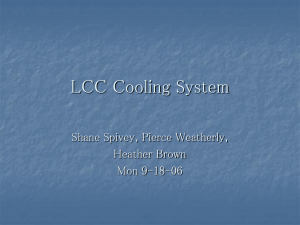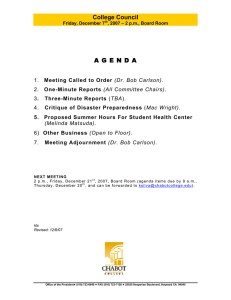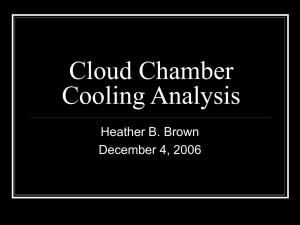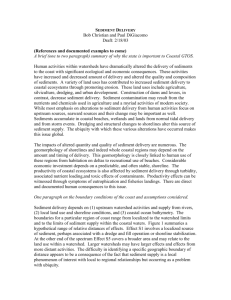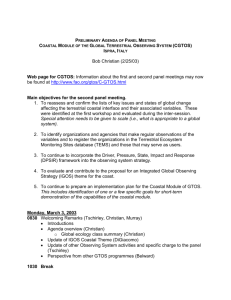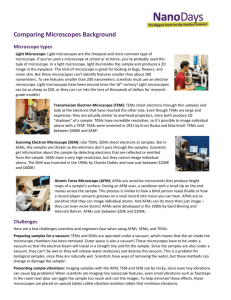Document 15922828
advertisement
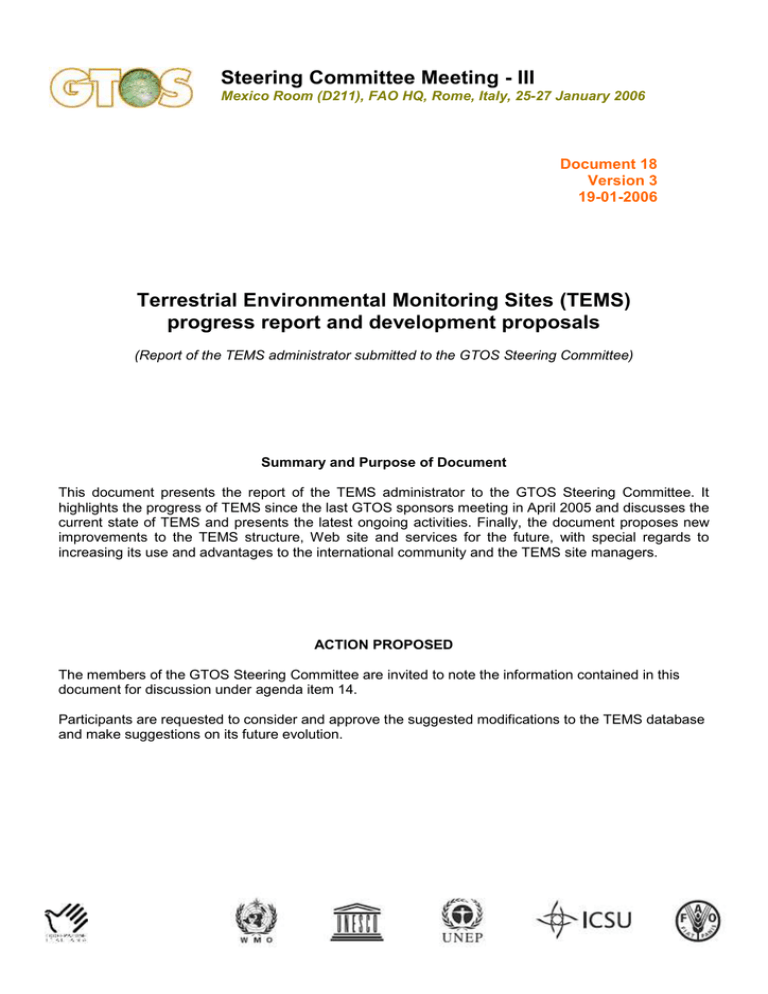
Steering Committee Meeting - III Mexico Room (D211), FAO HQ, Rome, Italy, 25-27 January 2006 Document 18 Version 3 19-01-2006 Terrestrial Environmental Monitoring Sites (TEMS) progress report and development proposals (Report of the TEMS administrator submitted to the GTOS Steering Committee) Summary and Purpose of Document This document presents the report of the TEMS administrator to the GTOS Steering Committee. It highlights the progress of TEMS since the last GTOS sponsors meeting in April 2005 and discusses the current state of TEMS and presents the latest ongoing activities. Finally, the document proposes new improvements to the TEMS structure, Web site and services for the future, with special regards to increasing its use and advantages to the international community and the TEMS site managers. ACTION PROPOSED The members of the GTOS Steering Committee are invited to note the information contained in this document for discussion under agenda item 14. Participants are requested to consider and approve the suggested modifications to the TEMS database and make suggestions on its future evolution. Terrestrial Ecosystem Monitoring Sites (TEMS) Database The TEMS database is an international directory of sites and networks that carry out long-term terrestrial monitoring and research activities. The database provides information on the “who, what and where” that can be useful to both the scientific community and policy-makers such as the major environmental conventions. TEMS was created in the late 1980s by UNEP’s Global Environment Monitoring System in Nairobi. The internet version was developed in 1995 by the Swiss Federal Research Institute. Since 1996 the GTOS Secretariat has been managing and developing the database with technical support from the Food and Agriculture Organization of the United Nations (FAO). TEMS is accessible online at www.fao.org/gtos/tems. TEMS activities have continued throughout the year despite a change in the database administrator in August 2005. It should be noted that as TEMS is only one of the duties of the administrator, it has not been possible to carry out new acquisitions of sites and/or networks over the last few months. A new version (3.0) of the TEMS CD-ROM has been finalized and a reprint ordered. TEMS features 2 040 monitoring sites 40 networks 1 200 contact persons 120 environmental variables and 55 socio-economic indicators (with description sheets) Thematic modules on hydrology, biodiversity, coastal zone, and mountain environmental issues. Monitoring site information available Location and coordinates Research objective(s) Variables measured Contact person(s) Network(s) Data policy Local climate estimates Geology Pedology Hydrology Reference area Basic land cover information Integration with other programmes GOSIC/GTOS/GCMD data matrix The Global Observing Systems Information Center (GOSIC), the NASA Global Change Master Directory (GCMD) and TEMS have developed a matrix to access selected datasets registered in the GCMD according to the TEMS topics and its associated variables. The objective was to bridge the gap between the monitoring sites which measure the variables and the datasets produced which are not always recorded in a metadata directory like GCMD. Although already active and available for use, some further steps are required in the next months to finalize the matrix. Proposals include: Implementation of an appropriate metadata extraction procedure from GCMD in the GTOS data Matrix using the equivalency table between TEMS variables and the GCMD parameters. Dynamic display of the numbers and extent of available GCMD datasets and TEMS monitoring sites through a “geographic representation” tool in a GIS environment. Furthermore, the development of a metadata management system in TEMS is proposed so as to allow the registered T_site managers to publish their datasets in the GCMD. World Data Centres The World Data Centres (WDC) system accounts for 52 centres in 12 countries holding a wide range of solar, geophysical, environmental and human-dimension data received from individual scientists, projects, institutions, local and national data Centres and other WDCs. No formal contact has been established between WDC and TEMS, although the participation of a WDC representative to the GTOS Steering Committee meeting could provide an opportunity to examine the linkages between WDC and TEMS. WDC is using the Goddard Space Flight Centre Global Change Master Directory (GCMD) as repository of metadata. TEMS is already collaborating with GCMD through the above mentioned GOSIC/GTOS data matrix. This represents a possible starting point for a potential collaboration between TEMS and WDC. Functional improvements in TEMS An improved and updated coastal module In the framework of the coastal GTOS initiative (C-GTOS), TEMS database has been further enhanced for coastal users with a new analysis on coastal T_sites within the buffer zones of 5, 10, 50 kilometres and the new 100 kilometres and 100 metres above sea level. In fact, a baseline definition of coastal zone has been adopted from Nicholls and Small (2002): “The land margin within 100 km of the coastline or less than 100 m above mean low tide, which ever comes first.” The new information will be added directly in the database and a new web-map interface of the TEMS Web site is under redevelopment to include the new data. The enhancement of the coastal component of TEMS will improve its relevance for collaborating networks themselves, as well as for regional and global programmes that require analysis and synthesis of in situ coastal datasets. This has already begun with a gap analysis of current available data in TEMS as part of the development of conservation and cultural sites projects. An improved metadatabase content Following a 2004 survey among TEMS users, the GTOS Secretariat proposed the implementation of a new service consisting of a web-based Digital Elevation Model (DEM) for each registered T_site. The coverage area has been designed as a squared 10x10 km around each site, featuring a DEM derived from SRTM data and a superimposed Landsat 7 image (ETM+, bands 3-2-1) of the same size and corresponding geographic position. The original SRTM grids (version 1) have been reprocessed by the GLCN topic centre at FAO headquarters to compensate for partially missing data. SRTM grids show a horizontal geometric resolution of nearly 90 metres. The final product will be a three-dimensional image (possibly accompanied by an on-demand fly-by video) of the buffer area, representing a significant improvement in the information content offered by TEMS to site managers and final users. TEMS and the Global Terrestrial Network - Hydrology (GTN-H) In July 2005, the former TEMS administrator, Mr Aurélien Letourneau, visited the Federal Institute of Hydrology in Koblenz, Germany where the GTN-H Panel held its second meeting. The purpose of the event was to review the developments of GTN-H since the first session, its role in the international context (GCOS, IGOS and GEOSS) and the progress of GTN-H projects. The participants noted that GTN-H was in accordance with the GEOSS concept. In addition, potential collaborations were discussed in relation with the inventory of networks and products developed by networks of interest to GTN-H. In that process, the participants agreed on the tasks to be completed, the responsible or contact persons and the time frame. A complete report of the meeting has been issued in December 2005 by the GTN-H Secretariat after consultation with participants and sponsors. Action item no.7 “Cross-check content of TEMS database with GTN-H inventory and FLUXNET”, has not yet been addressed due to the end of assignment of Mr Letourneau with GTOS. TEMS and the UNESCO’s Programme on Man and the Biosphere (MAB) In August 2005, Mr Letourneau also took part in a meeting with officers of the United Nations Educational, Scientific and Cultural Organization (UNESCO), in Paris, France in order to discuss and analyse the potential collaboration between the Man and Biosphere Reserves Programme (MAB) of UNESCO and TEMS. A description of both TEMS and the MAB programme (and Biosphere Reserves) as well as ongoing improvements and updates was given by the participants. Discussion led to an agreement that MAB and GTOS should determine the extent of their collaboration in the management of the biosphere reserves information. An action item list was also compiled, featuring five fields of work to strengthen collaboration between GTOS and UNESCO. Once the terms of the collaboration were determined, the GTOS Secretariat should implement the agreed changes in TEMS to fit MAB requirements. Finally, MAB Biosphere Reserves directory should be transferred into TEMS. These action items, as well as improvements in presentation and communication with site managers, will be addressed in the coming months due to shortage of time of the new TEMS administrator. Web statistics The two charts below report on TEMS Web site statistics updated with respect to those presented at the last GTOS Sponsors Meeting in April 2005. A trend line has also been added to the charts (dashed line) to show how both the number of unique visitors and the average of pages viewed have increased in the last two years. Further statistics can be requested by contacting the TEMS administrator (gtos@fao.org). TEMS unique users (total number per month) 5 000 4 000 3 000 2 000 1 000 - Ja n Fe ua r br y ua r M y ar ch Ap ril M ay Ju ne Ju A ly Se ug pt ust em O ber c No to b ve er De mb ce e r m Ja be r n Fe ua r br y ua r M y ar ch Ap ril M ay Ju ne Ju A ly Se ug pt ust em O ber c No to b ve er m be r Number of unique visitors 6 000 Months (2004-2005) Pages viewed (average per day) 1200 Number of pages viewd 1000 800 600 400 200 Ja nu Fe a ry br ua r M y ar ch Ap ril M ay Ju ne Ju A ly Se ugu pt st em O ber c No to b ve er De mb ce e r m b Ja e r nu Fe a ry br ua r M y ar ch Ap ril M ay Ju ne Ju A ly Se ugu pt st em O ber c No to b ve er m be r 0 Months (2004-2005) Future of TEMS Numerous activities are being planned or implemented for the future to make TEMS more efficient in serving the community of users’ needs. In the early months of 2006 the implementation of the Digital Elevation Model (DEM) for the T_sites should be completed and made available through the Web site. Furthermore, the information content of the area around each site (corresponding to the DEM) will be improved in the coming months with Landsat scenes from the MSS and TM sensors (dating back to the early 1980s and 1990s, respectively), allowing for a detection of changes in time. Land cover will be also provided based on the Global Land Cover 2000 initiative. The biodiversity and hydrology modules in TEMS will be improved to match the standard of the more advanced coastal module and to take into account the recent developments in the support of GTOS to international conventions and new or existing global observation networks, such as GTN-R, GTN-H, GTN-P. The mountain module should also be further expanded and linked with other initiatives. Further improvements will regard the set up of a web-based user forum for discussion of relevant issues, exchange of data or suggestions. Finally, the structure of the metadata within TEMS should be modified so as to reflect the requirements and needs of international standards, in particular the ISO rule, with potential fields of collaboration with the FAO Geonetwork initiative.
